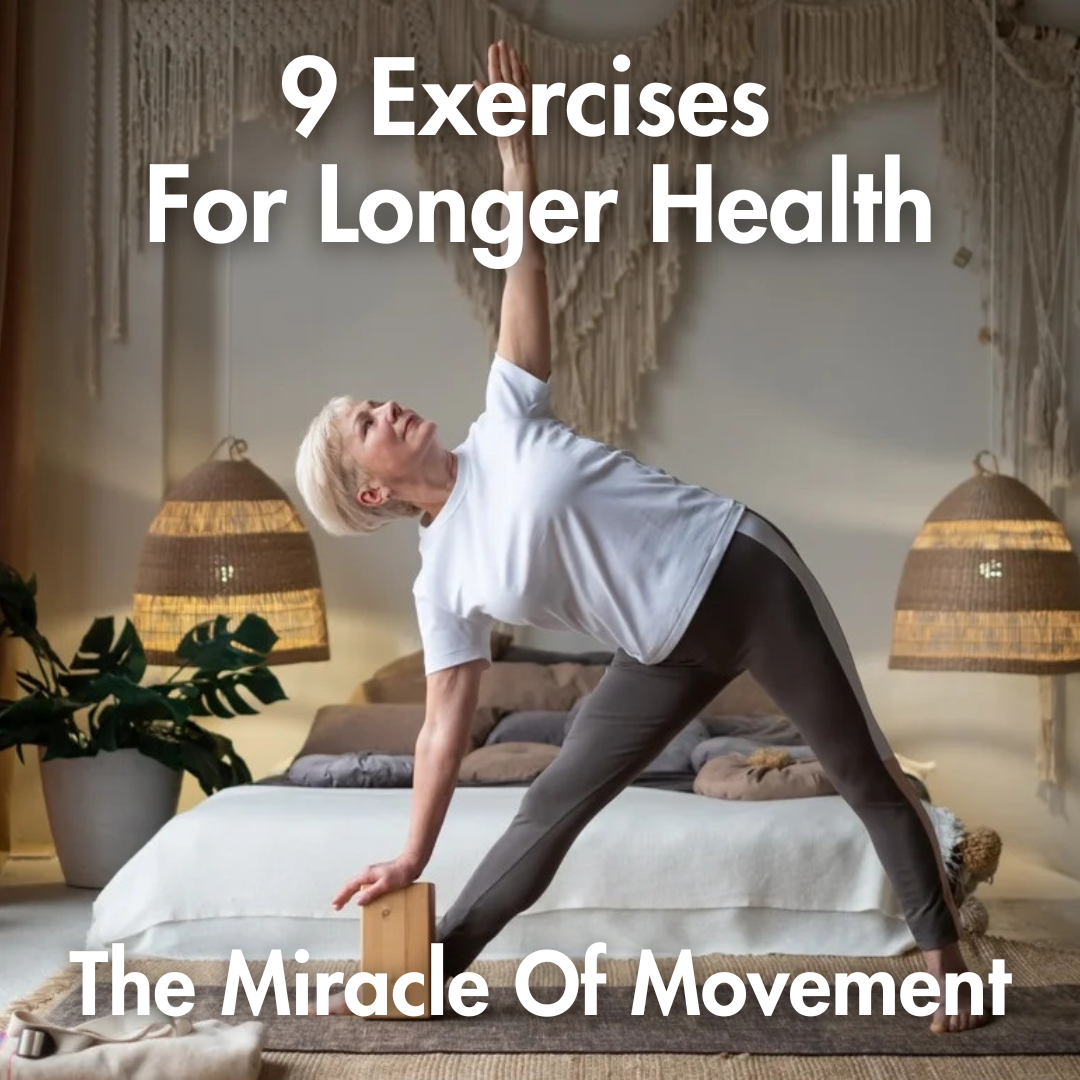.png?lang=en-CA)
As we age, maintaining an active lifestyle becomes essential for extending our health and enhancing the quality of our years. Regular physical activity and exercise can reduce the risk of chronic diseases and injuries, boost mental health, strengthen social connections, and help preserve physical and cognitive function.
There are exercises for all physical abilities, ranging from extremely gentle to more vigorous, that can significantly benefit seniors and promote longer health. Incorporate habitual movement and exercise into your life by finding an activity that you love!
Exercises For Seniors
1. Walking
Walking is one of the simplest yet most effective forms of exercise for seniors. It’s accessible, requires no special equipment, and can be done almost anywhere. Walking helps to improve cardiovascular health, reduces the risk of heart disease, strengthens bones, and enhances mental well-being, all while being gentle on your body.
According to the American Heart Association, for every hour of brisk walking, life expectancy may increase by two hours. Walking also helps to manage weight, lowers blood pressure, and improves cholesterol levels.

2. Jogging
Jogging, though more intensive than walking, offers substantial benefits for cardiovascular health. It improves heart function, increases stamina, and helps in weight management. It can also enhance bone density, reducing the risk of osteoporosis.
For seniors, it is important to note that starting slowly and consulting with a healthcare professional to ensure safety when beginning jogging or running is crucial. While jogging is not dangerous by nature for healthy seniors, suddenly pushing one’s self too hard after periods of inactivity should be avoided.
Jogging releases endorphins, which in turn leads to improved mood and reduced stress levels. A study published in the British Journal of Sports Medicine found that even short distances of light jogging can lead to significant health benefits and increased longevity.
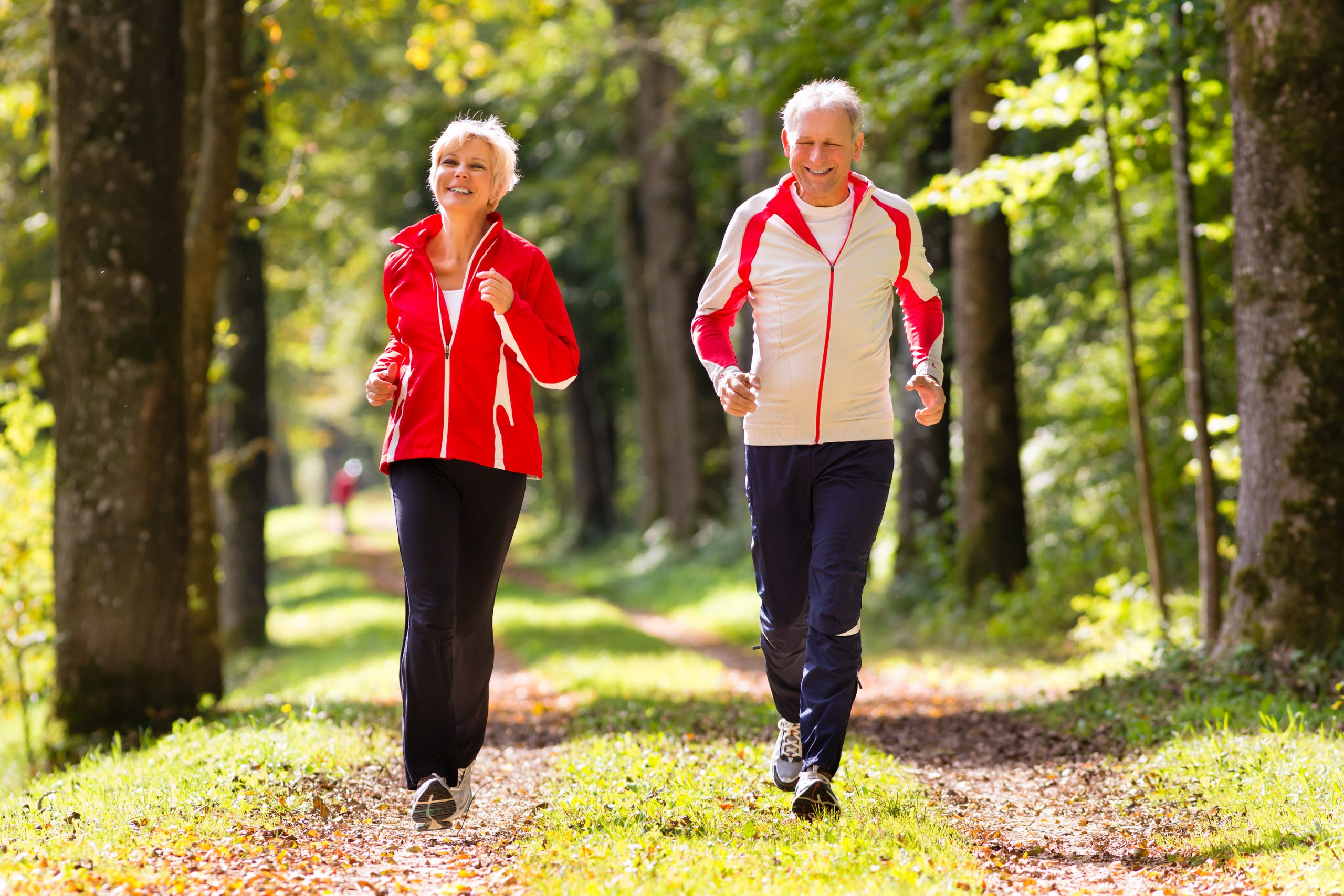.jpg?lang=en-CA)
3. Water Exercises
Water exercises, including swimming and water aerobics, are ideal for seniors, particularly those with joint issues or arthritis. The buoyancy of water reduces impact on joints while also providing resistance that helps to strengthen muscles.
Water exercises improve cardiovascular fitness, flexibility, and muscle strength, making them safe, effective, and most importantly fun options for older adults.
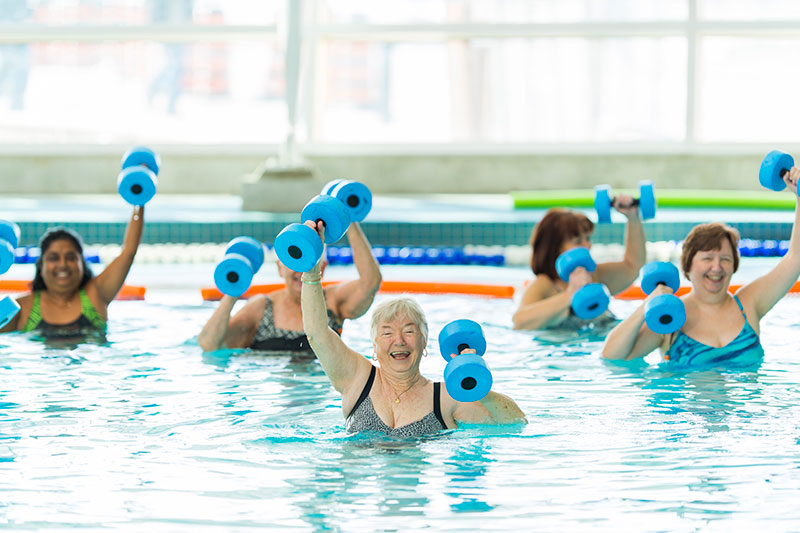.jpg?lang=en-CA)
4. Dance and Zumba
Dancing, including classes such as Zumba, combines physical activity with fun and social interaction. It improves cardiovascular health, coordination, balance, and muscle strength.
According to the National Institute of Health, one hour of traditional ballroom dancing is equivalent to one hour of brisk walking, while more vigorous forms of dance like salsa can be comparable to running.
Dancing also stimulates the brain with the need to remember steps and routines while exercising, which enhances cognitive function and reduces overall risk of dementia. Dancing is a joyful way for seniors to stay active and engaged, and build social connections with others too!
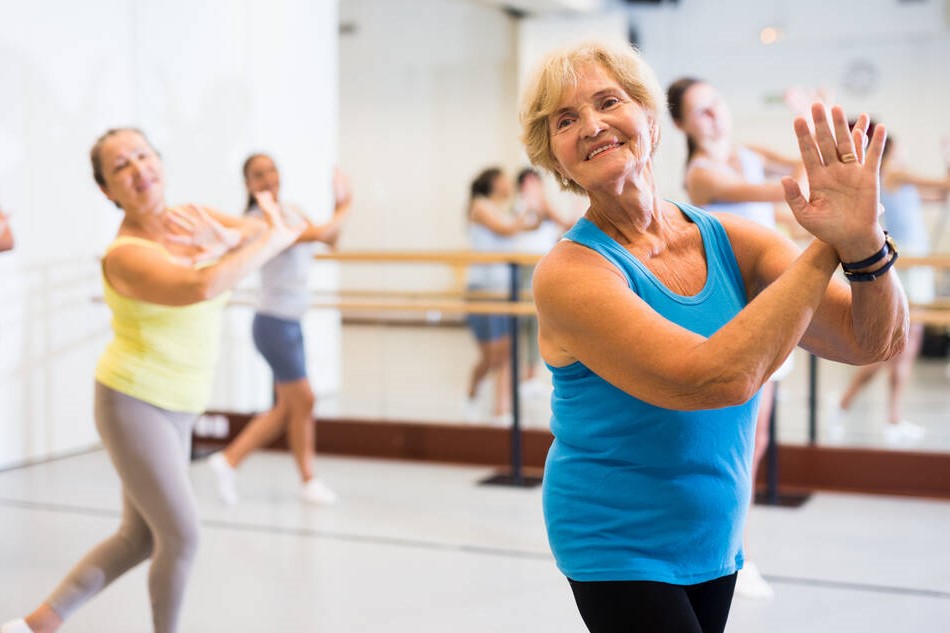.jpg?lang=en-CA)
5. Yoga
Yoga offers an incredible combination of physical and mental benefits for seniors. It enhances flexibility, strength, and balance through various poses and deep breathing techniques. Practicing yoga can lower stress levels, improve mental clarity, and reduce symptoms of arthritis. This low impact and functional fitness activity poses a lower risk of injury as well with its slower, intentional movements.
Studies have found that yoga can indirectly be associated with longer life expectancy. Yoga is particularly beneficial for seniors, as it can be modified to accommodate different fitness levels and limitations for an overall enjoyable experience that centers both the mind and body.
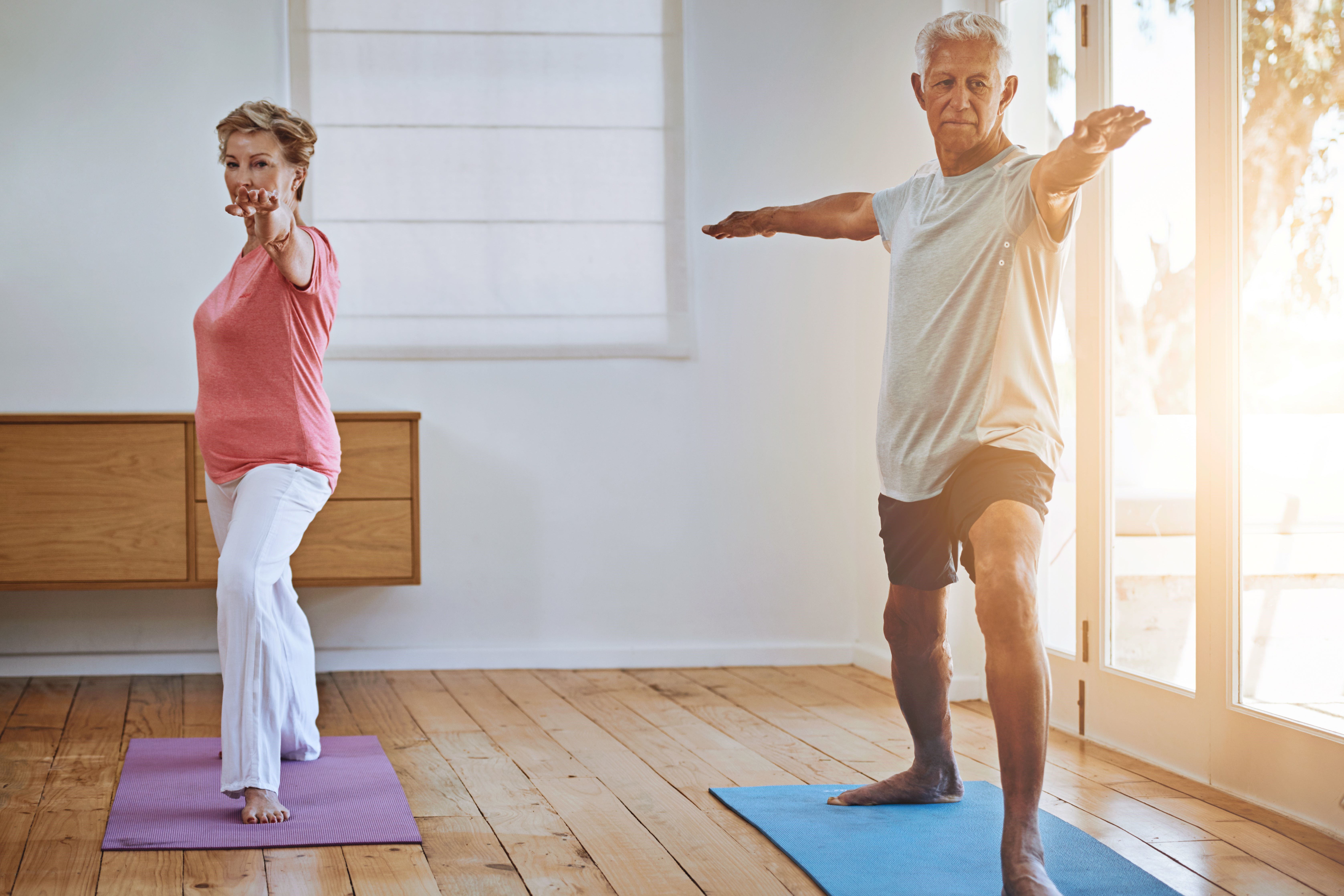.jpg?lang=en-CA)
6. Tai Chi
Tai Chi is a low-impact exercise that, similarly to yoga, combines slow, deliberate movements with deep breathing. It is an ancient Chinese tradition based in martial arts, well known for improving balance, flexibility, and muscle strength.
Research has indicated that long-term practice of Tai Chi substantially reduces the risk of falling and improves overall stability. It also has a meditative component that promotes relaxation and reduces stress. Tai Chi can enhance cardiovascular health and lower blood pressure, contributing to a longer, healthier life.
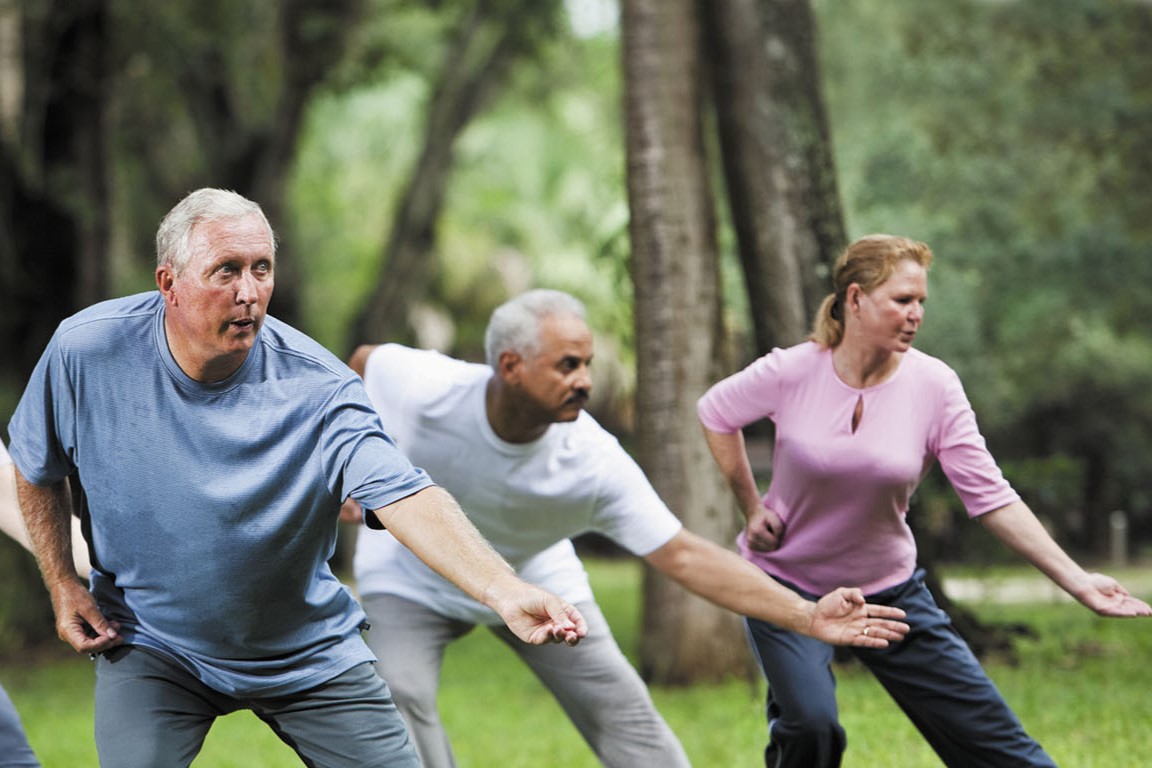.jpg?lang=en-CA)
7. Racket Sports
Racket sports such as tennis, badminton, and pickleball provide both aerobic and anaerobic exercise. Aerobic exercise involves cardiovascular conditioning and repeated, continuous movement, while anaerobic exercise is higher intensity and involves short and fast bursts of energy. While racket sports offer many health benefits, they should also be started slowly and built up to gradually incorporate more intensive movements.
Racket sports improve cardiovascular health, coordination, and reflexes. Research has indicated that those who play racket sports have a lower risk of early death, with tennis players, for example, living an average of 9.7 years longer than inactive individuals.
Racket sports are also typically played with other people or in groups, enhancing social connections and creating exercise habits.
.jpg?lang=en-CA)
8. Golf
Golf combines physical activity with coordination. Walking the course, rather than using a cart, provides significant cardiovascular benefits, however golfing itself also improves balance, coordination, and muscle strength, particularly in the upper body.
It is a social activity that fosters connections and reduces feelings of isolation. Golf is a low-impact sport, making it perfect for seniors looking to stay active, interact with others, and get outdoors!
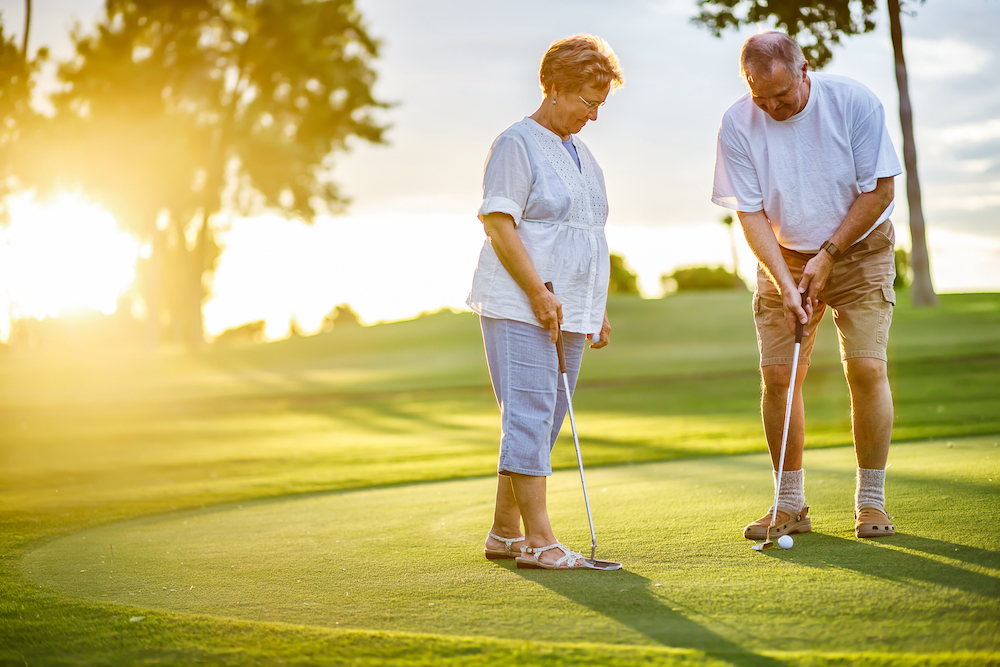.jpg?lang=en-CA)
9. Strength Exercises with Weights
Strength training is crucial for maintaining muscle mass and bone density, which naturally decline with age. Using light weights or resistance bands can help seniors perform daily activities more easily and reduce the risk of operational injuries.
Strength training exercises improve overall body strength, enhance metabolism, and contribute to better posture and balance. The Physical Activity Guidelines for Americans recommends engaging in strength training activities at least twice a week. A study found that older adults who did some form of weight lifting had a 9% to 22% lower risk of death over a decade.
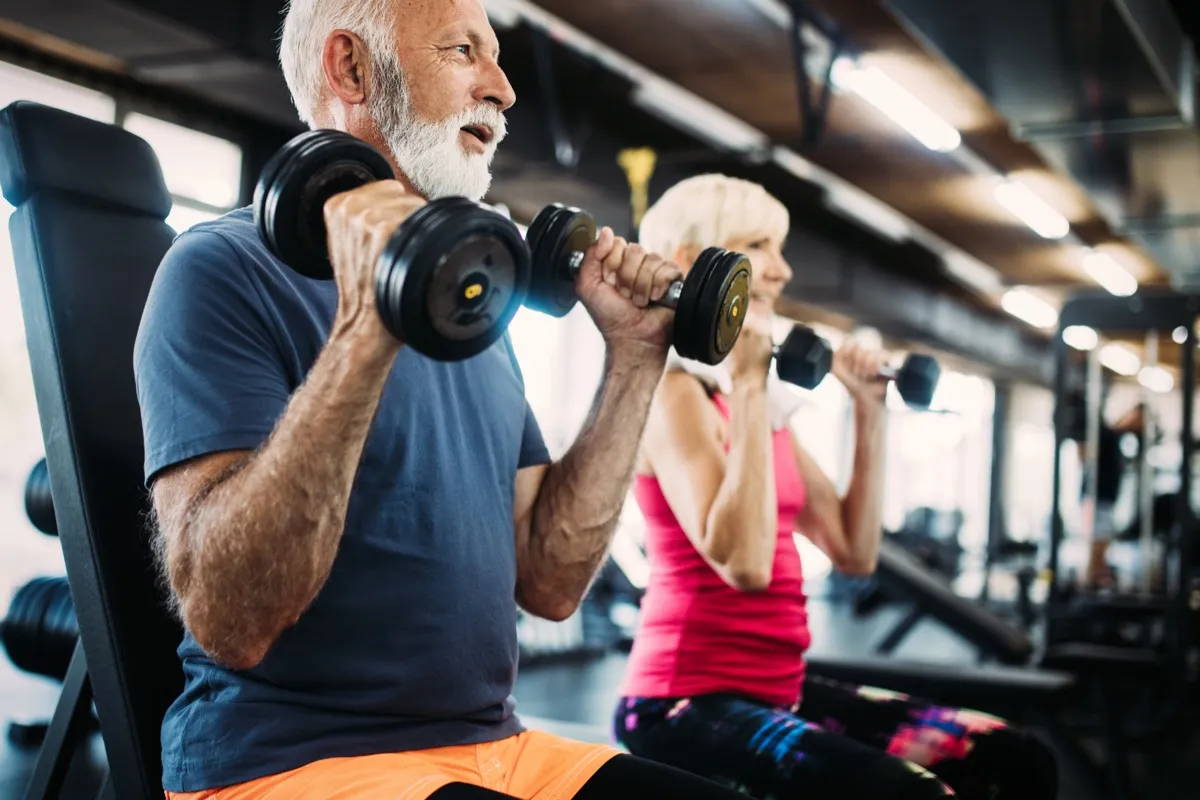.jpg?lang=en-CA)
Longevity In Physical Activity
Incorporating exercise into a daily or weekly routine can significantly enhance longevity and quality of life for seniors. The key is to choose activities that are enjoyable and sustainable for long-term commitment and benefits, and a little variety in exercise is always great too! Don’t overthink it, just get out there!
Whether it’s the simplicity of walking, the social aspect of racket sports, or the gentle effects of yoga and Tai Chi, staying active promotes longer health and wellness. So, lace up those walking shoes, grab a racket, or roll out a yoga mat – your future self thanks you.


